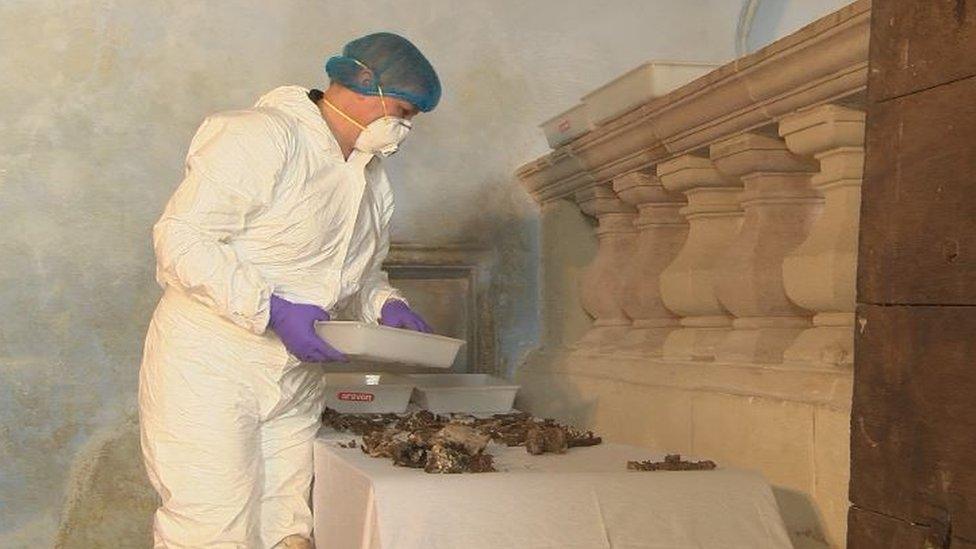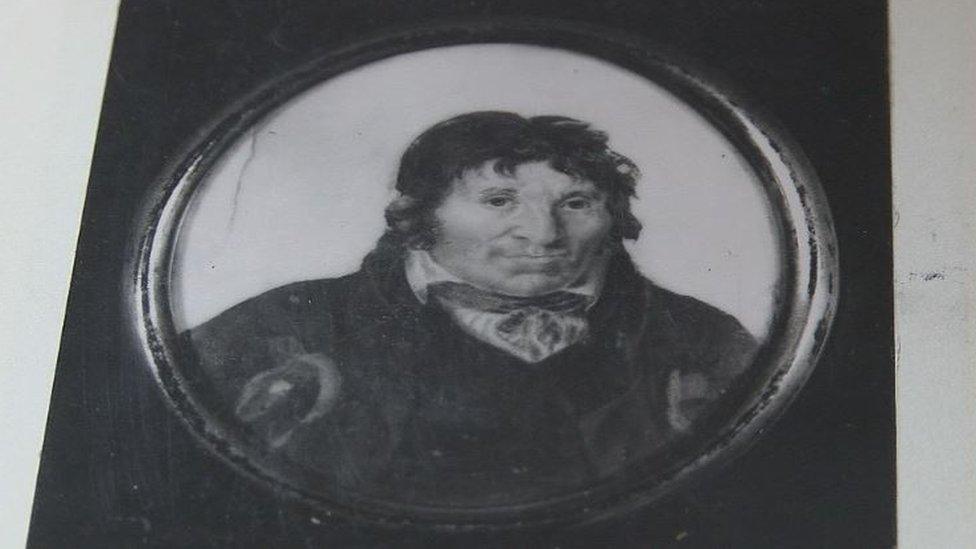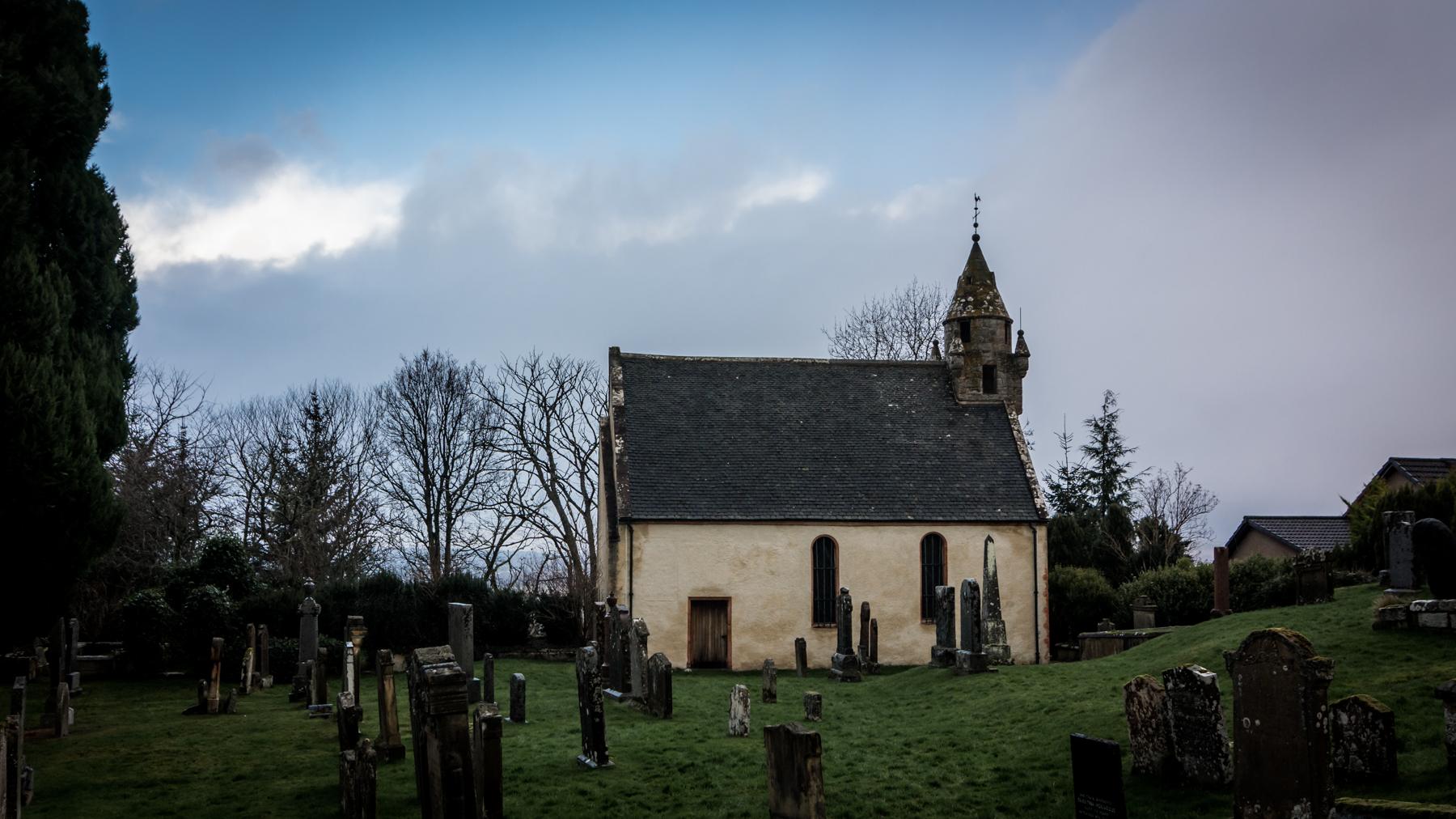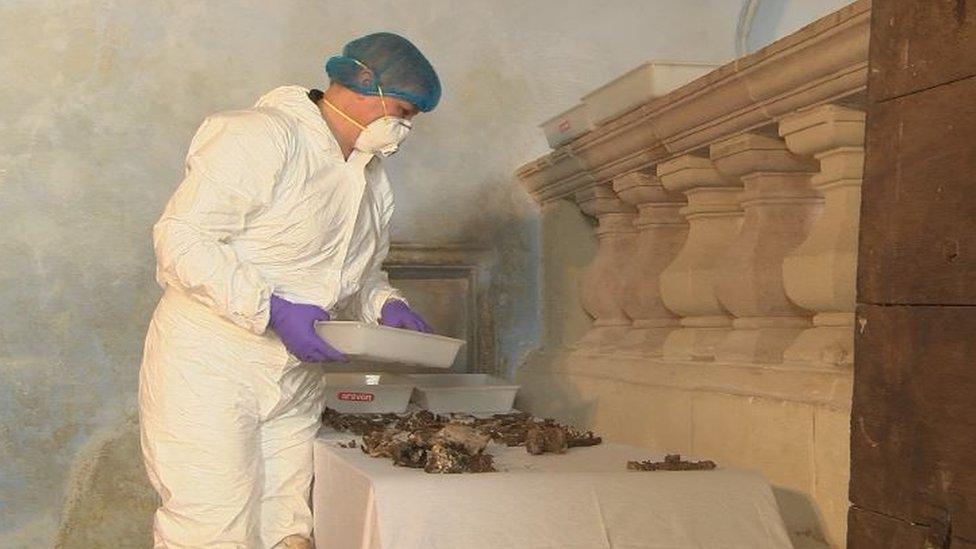Headless woman twist to Highlands mystery of The Old Fox
- Published

Scientists examined bones held in a lead casket
What were believed to be the remains of the last man to be beheaded in Britain are in fact those of a headless woman, forensic scientists have said.
Simon Fraser, 11th Lord Lovat and known as The Old Fox, was executed in London in 1747 because of his support for Bonnie Prince Charlie.
His headless body was taken back to Scotland and placed in a mausoleum near Inverness, according to his clan.
But scientists have found that the bones are of a woman aged 25 to 35.
A team led by forensic anthropologist Dame Sue Black, of the University of Dundee's Centre for Anatomy and Human Identification, worked with historian Dan Snow on the forensic examination.
The bones studied were from inside a damaged lead casket at the Frasers' Wardlaw Mausoleum at Kirkhill.
The woman was the main body in the casket, which also contained bone fragments from other people, but not The Old Fox.

Hunting The Old Fox
By Dan Snow, Historian and broadcaster
Last year, I got a call about a Highlander without a head.
Simon Fraser, Lord Lovat, a prominent highland laird who had played both sides in the civil wars that plagued Scotland and Britain in the first half of the 18th Century was the last man in Britain beheaded for treason.
When I found out that a University of Dundee team, led by the legendary Professor Dame Sue Black, was keen to investigate the coffin in the crypt which his clan believed contained Simon Fraser, I was desperate to go and observe.

The official account of The Old Fox's execution was that the Clan Fraser chief's body was buried under a chapel floor in the Tower of London.
But it has long been believed that his supporters intercepted the body while it was being moved and took it on a ship back to Scotland.
Prof Black said the results of the examination were just the beginning of new mystery.

Wardlaw Mausoleum was believed to be the resting place of the clan chief
The forensic anthropologist said: "We can say with absolute certainty that these are not the remains of The Old Fox.
"The remains were in poor condition, very wet, in common with remains that have been a long time in a wooden or lead coffin, so in line with what we expected.
"The area of the body most indicative of whether remains are male or female is the shape of the pelvis, and two areas of the pelvis in particular. In both areas, these remains were very feminine.
"There is no way that these were the remains of an 80-year-old, 6ft man who suffered from gout and arthritis.
"We estimate these are the remains of a young woman, probably aged 25-35.
"We understand that there are some possibilities that she might be a member of the Fraser family, and further DNA testing is being carried out."

A Fox's Tale: Who was Simon Fraser, 11th Lord Lovat?

The clan chief, the last person to be beheaded in Britain, is recorded in history as a charmer who was prepared to switch sides during and around the times of the Jacobite uprisings.
But the last of those risings, in which he supported Bonnie Prince Charlie, ended in defeat for the Jacobites at Culloden in April 1746. The following year, Lord Lovat was executed at Tower Hill in London.
It is said that several people who had gathered to watch the beheading died after the scaffold they were on collapsed.
Lord Lovat found this incident funny and is said to have been so visibly amused when he was executed that his death led to the phrase "laughing your head off", external.
The Old Fox is a figure familiar to fans of Diana Gabaldon's series of Outlander books.
In the author's time-travelling, romantic adventure stories, he is the grandfather of Jamie Fraser, one of the books' lead characters.
Scottish actor Clive Russell plays The Old Fox in the television adaptation of Gabaldon's novels.

Prof Black said questions now to be answered included how the remains of a headless woman came to lie in an expensive casket thought to have been designed for Lord Lovat.
She asked if the family had simply decided to put the casket to use, or was there "more of a conspiracy at play".
But she said there was no reason "at present" to doubt the official account of where The Old Fox's body was buried.

Dame Sue Black led the examination of the bones
On the woman's headless body, Prof Black added: "We simply don't know what happened to the head, but it may be that it has been taken as a trophy many years ago.
"The DNA-testing should confirm whether the remains are those of a member of the Fraser family, in which case the casket may well have simply been put to use.
"But if the remains are not a member of the family, then we are faced with more of a poser as to how she came to be buried in the casket."
The results of the study were revealed earlier on Thursday to an audience of more than 400 at a special event organised by the Royal Society of Edinburgh in Inverness.
- Published20 December 2017

- Published5 October 2017

- Published15 September 2017

- Published11 February 2017
